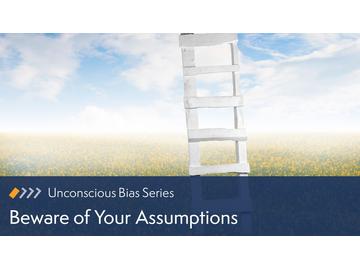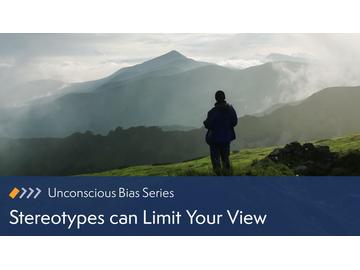Created by Mindscaling
Category Management/Leadership > Soft Skills
Identify your bottom-up responses and how they can affect your daily life
Learn new ways to relate to all people without acting on stereotypes or bias
Determine whether your self-perception matches how others perceive you
Apply three mental tools to check and manage your bias
Chrome; Microsoft Edge; Firefox; Internet Explorer 9; Internet Explorer 10; Internet Explorer 11; Safari
English




Making assumptions is a completely natural behavior, but it can lead to beliefs and even actions that we would not have come to if we had all the information, and that practice can cause much undue anxiety and stress. Use critical thinking skills to acknowledge and resist assumptions to quiet your biases and save yourself some energy and anxiety.
Objectives:
Course Features: Audio Narration, Video, Job Aids and Reference Materials

Mental short cuts go by many different names. They happen when you react or make a decision without considering all the information you have available. Instead, you might consider only the most recently-received information. What happens when you react without enough information is that your biases have much more influence over your decisions. Learn to identify and avoid mental shortcuts to lessen the influence of your biases.
Objectives:
Course Features: Audio Narration, Video, Job Aids and Reference Materials

Today’s society is rampant with stereotypes. Stereotypes are based on the idea that individuals within a group must hold similar characteristics. Virtually everyone has them, but most people are ashamed to admit it, which makes them difficult to explore and resolve. Stereotypes can create biases depending on how your stereotypes fit in with the people and information around you.
Objectives:
Course Features: Audio Narration, Video, Job Aids and Reference Materials


We’re all guilty of bias, but it can be dangerous if left unchecked. Practicing self-awareness and admitting that you might have your own bias is a crucial step in reducing the effect bias has on your decision-making and relationship-building. Once you’ve identified your bias, work toward changing the way you think as a habit.
Objectives:
Course Features: Audio Narration, Video, Job Aids and Reference Materials

Biases show up in our actions and words, which can be an issue when you’re trying to solve a problem or pitch an idea. Biases prevent us from thoroughly examining the idea before reacting. Then we develop support around the reaction instead of choosing our reaction based on what idea or solution has the most support. By rephrasing or hearing the idea or problem from other perspectives, you can help minimize thought errors and get to the best possible result.
Objectives:
Course Features: Audio Narration, Video, Job Aids and Reference Material

Or
Subscribe to Coggno Prime
Get this course, plus 1,230+ of our top-rated courses, with Coggno Prime
Our brains are so infinitely complex, we’re not even aware of most of the processes that are constantly occurring, but one of those processes could be contributing to unconscious bias, along with a mess of other bad habits. Fortunately, there’s a way to address and correct this automatic response system. In this course, you’ll learn how to correct habits and impulses by utilizing your top-down brain to correct and redirect your bottom-up brain.
Objectives:
Course Features: Audio Narration, Video, Job Aids and Reference Materials